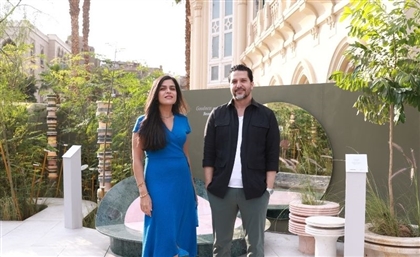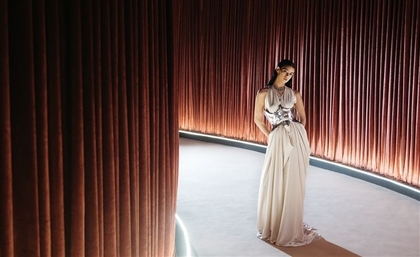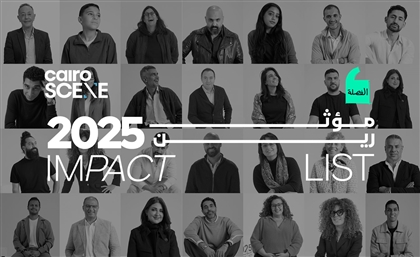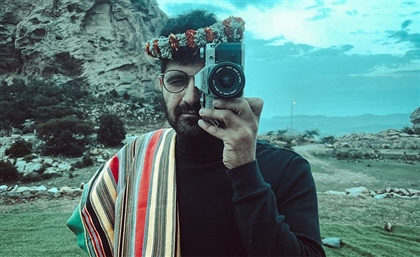The House that Home Built
The exclusive behind the scenes story of Cairo Design Week’s biggest, boldest and craziest concept ever.
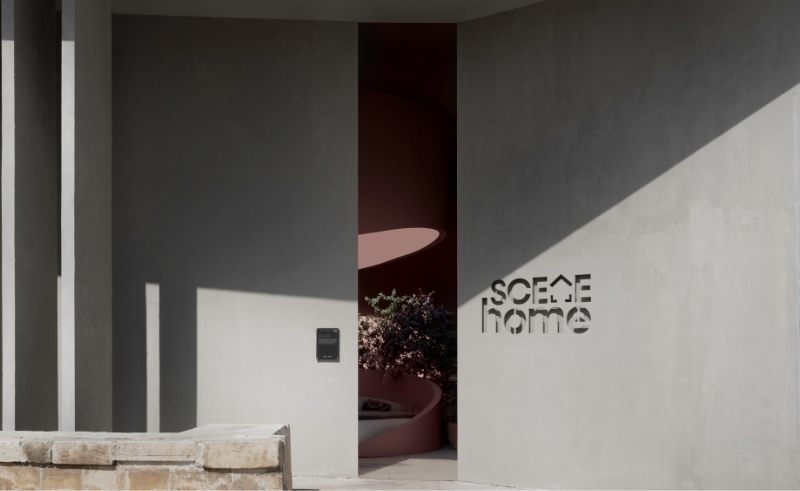
The story of the Scene ‘Home’ at Cairo Design Week (CDW) 2024 began not with a plan, but with a moment of madness. We were sitting in a meeting, staring at a blank plot, some 200 square metres that CDW had just assigned to us to play with as their official media partner. Ideas were being thrown across the table faster than anyone could jot them down. Then someone joked, “Why don’t we just build a house?” A literal SceneHOME!
It was absurd. Outrageous. Impossible. The kind of idea that earns a few laughs before being forgotten. But as is often the way at MO4 Network (the publishers of SceneHome) it was taken seriously.
And that’s how the impossible began.
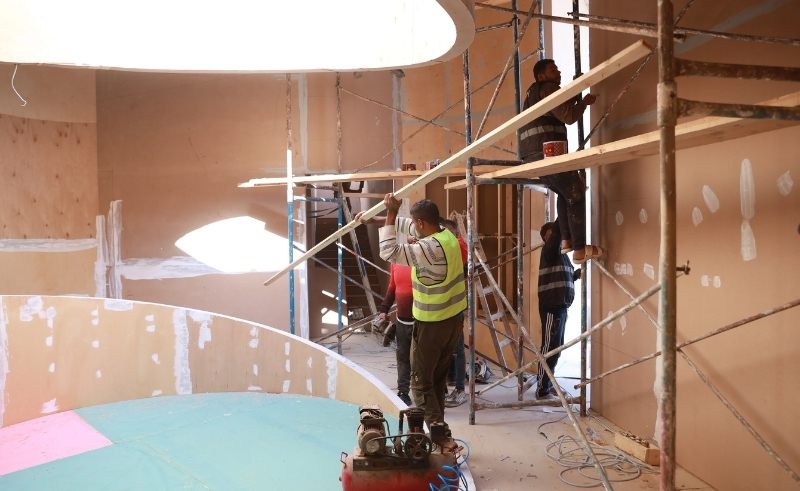
With only weeks to go before Cairo Design Week, we decided to do something no publication had ever done before: build a house from scratch, invite Egypt’s most renowned designers to each take on one room, and somehow make it all come together.
As soon as the meeting ended, I ran out, phone in hand, calling designers. I barely got the words out before they started saying yes and somehow making me believe that this wild dream was within reach.
But as I soon realised, every major design agency in Egypt was already swamped preparing for Cairo Design Week, which that year sprawled across five districts of the city. Still, what we were attempting wasn’t just another exhibition, it was a statement. Against all odds, some of Egypt’s most brilliant creative minds said yes. One after another, they joined what would become an unprecedented collaboration: a house built by six studios, each with its own philosophy, each telling a different story, and yet, together, narrating one unified message about Egyptian design.
The rest was nothing short of a miracle.
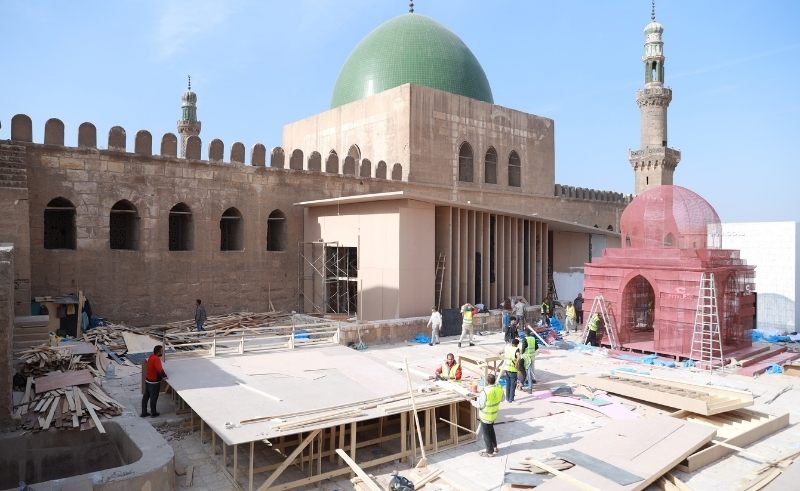
The Impossible Build
The house spanned 285 square metres, with ceiling heights reaching six metres, and was constructed — miraculously — in just three days.
A structure of that scale shouldn’t have been possible in that timeframe, and yet it stood proudly inside the Citadel, a feat achieved by Mental Flame, who built the shell, and Morph Design Studio, who fabricated and finished surfaces inside and out.
In its own way, this house was a reflection of Egypt’s design scene: ambitious, chaotic, collaborative, and unreasonably determined. Six design studios, two build partners, dozens of craftspeople — all working through sleepless nights to make an idea real.
And maybe that’s why it worked.
After all, SceneHome itself should never have existed either. Who launches an English-language design publication in Cairo in 2021 — competing with established international titles — and expects it to succeed? Yet somehow, it did. It thrived. It became a platform for Egyptian design voices — big and small, young and legendary — to speak to the world.
Without intending to, SceneHome became an archive of Egypt’s design renaissance, documenting the industry’s evolution in real time. A statement echoed by Amr Helmy himself when later asked about us.
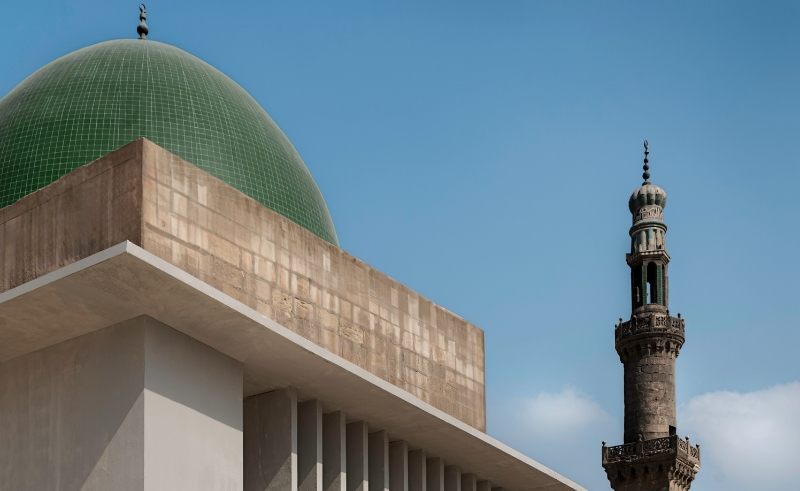
Walking Through the House
From the outside, you could tell this wasn’t an ordinary installation. Its tilted roofline clashed with the Citadel’s geometry in the most elegant way — a structure in conversation with history.
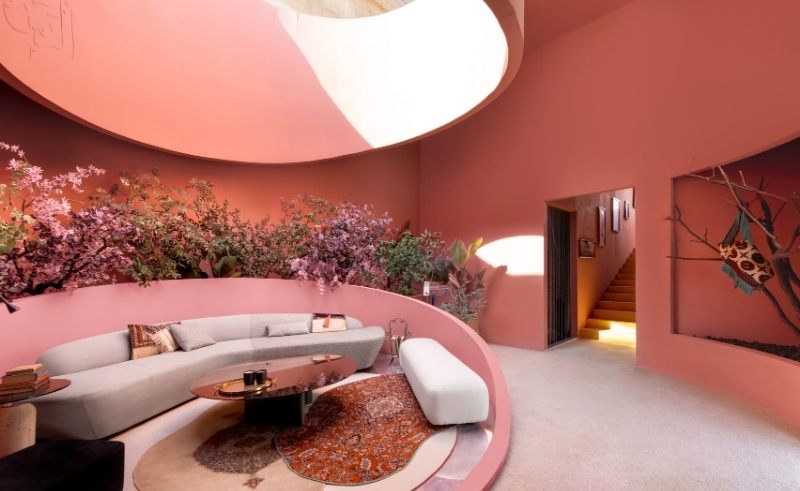
Stepping inside, you entered Emy Hussein’s circular foyer, where time folded in on itself beneath a cylinder of light. To the left, Amr Helmy’s kinetic kitchen curved in defiance of logic, leading naturally into Shewekar’s warm-toned living room framing Yusuf’s Well. Across from that, Emma James’s celestial bedroom glowed like a private observatory. And beyond — a locked door glowing faintly pink — waited that infamous bathroom, a world apart.
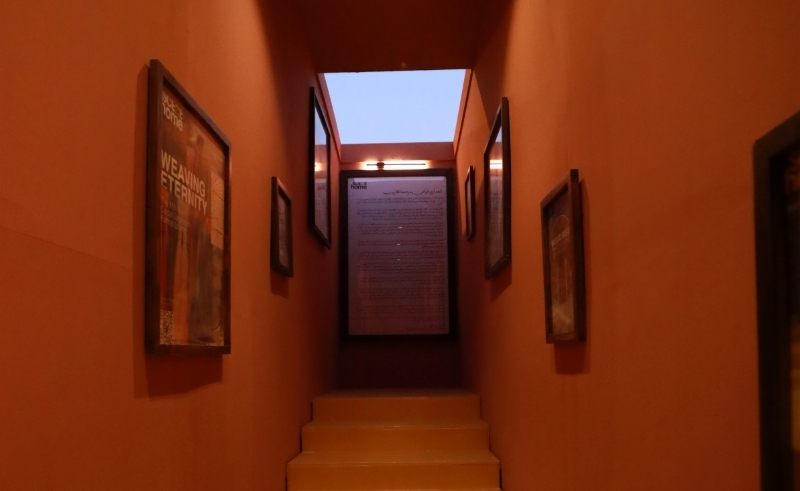
Between Emma’s bedroom and the restroom, a staircase ascended — its walls transformed into a timeline of SceneHome’s own milestones: our first-ever home tour with Karim Mekhtigian, a heartfelt editorial honouring the late Tarek Naga, and finally, at the top, a fictional narrative written by Amr Helmy for Ahmed Fayyad — a story imagining his architecture conversing with the great builders of Cairo’s past.
Above it, a skylight framed the minaret perfectly — an accident that became our symbol. Centuries of architecture, creativity, and story, all converging in one unplanned moment.
Three Days, One Night, Forever in Memory
Those who worked on the house during those sleepless three days never imagined it would be finished. Yet it came alive — not with ceremony, but with a house party.
A house party. Inside the Cairo Citadel.-d07da419-f4fd-4b22-8de9-5dc15e5ae9a8.jpg)
Not an opening. Not a gala. Not a corporate event. A house party — spontaneous, joyous, and utterly unrepeatable. The music echoed through the vaulted ceilings, light spilled across orange walls and silver chimneys, and designers, artists, editors, and friends danced as if they had just witnessed a miracle. Because they had.
The feedback was overwhelming. Visitors couldn’t believe what they were seeing. It wasn’t just an exhibition; it was an emotion made physical — a moment in time where Egyptian designers, creatives, and storytellers came together and built something that shouldn’t have existed… but did.
It captured joy. Struggle. Unity. And that rare spark of magic that happens when imagination becomes architecture.
A design magazine became a house in the Citadel.
And in doing so, SceneHome didn’t just tell Egypt’s design story — it lived it.
The Rooms That Built the Story
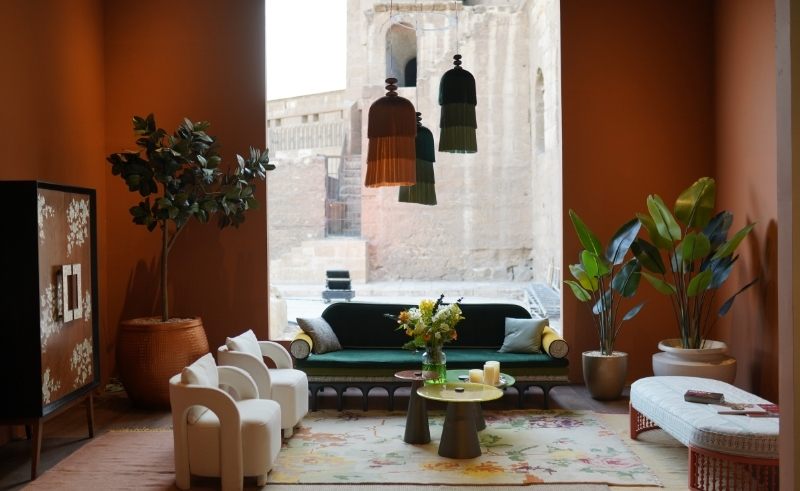
Shewekar El Gharably — Shewekar Design Studio: The Living Room
Our living room seemed to float above Cairo, framed by the timeless stone of the Citadel walls — walls that have witnessed caliphs, sultans, pashas, and dervishes since the 12th century. Shewekar’s vision was a perfect embodiment of her ethos: blending heritage charm with contemporary comfort, always designed and produced by Egyptian hands.
She chose a warm, sunlit orange tone for the walls, gently interrupted by motifs of Sufi culture. Her signature Hassan Fathy–inspired sofa stretched beneath a massive window overlooking Yusuf’s Well, a historic landmark within the Citadel itself. It was both grounded and ethereal — a room that spoke of Egypt’s spiritual past while celebrating its design present.
“In a world of mass-produced furniture,” her plaque read, “we aim to reimagine pieces of traditional form with today’s materials and techniques, telling a new story that brings the past forward to serve the present.”
-416726e9-3191-4296-9758-5134f8a63405.jpg)
Karim El Hayawan & Nehal Leheta — Design Point: The Restroom
Their statement on the plaque was as unexpected as the space itself:
“The restroom — that locked door, those few moments where you owe no one anything: vanity, release, relief, or self-love. But who said restrooms are for resting? When CairoScene and SceneHome are in the formula, rest is rust.”
And indeed, rest was the last thing that came to mind when stepping inside. The restroom, fabricated and executed by Morph Studio, was a complete sensory shift — from the serenity of the Citadel to what felt like a Berlin underground club. Every surface was tiled, the lighting glowed neon, and a single goldfish swam beneath it all, the most unexpected flourish of life in a surreal dreamscape. It was bold, theatrical, mischievous — and utterly unforgettable.
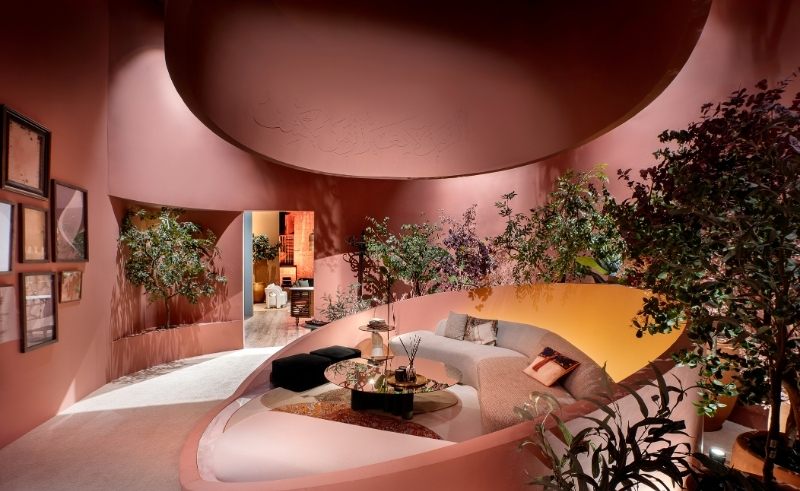
Emy Hussein — Else Lab: The Foyer
The plaque read: “‘Else’, Here & Now. The intersection of space and time.”
And that was precisely what Emy created — a collision between worlds. Her foyer opened as a court of light, a vertical illusion of infinity where a cylindrical void carved through the ceiling, allowing daylight to cascade through the heart of the house.
On the ground, this architectural feat translated into a space that made you stop breathing for a moment. A mirrored circular table reflected the sky above, creating the illusion that the heavens had descended indoors. Flower Bar’s greenery softened the geometry, weaving life into concrete. The furniture was a meditation in curvature — a sculptural C Reality sofa and custom pieces from Kahhal Looms — turning the foyer into a living poem about time, gravity, and presence.

Ahmed Fayyad — FR Partnership: The Architecture
Fayyad’s architectural concept was described simply:
“An architectural shell that holds domestic scenes. Layers of light and shadow in a temple form.”
In person, it was astonishing. Minimalist lines conversed effortlessly with the Citadel’s monumental walls. The house was designed with a slight tilt — a quiet act of genius — allowing the minaret of the Sultan Al-Nasir Muhammad Mosque to align perfectly with the temporary structure. The dialogue between centuries-old stone and fresh steel and timber felt almost spiritual. The architecture was monumental yet minimal, present yet humble. It didn’t compete with the Citadel; it harmonised with it.
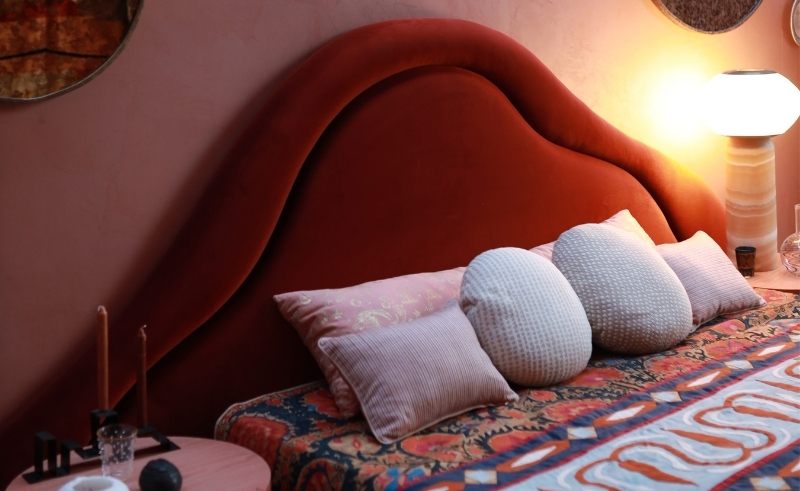
Emma James — Eklego Design Studio: The Bedroom
Emma’s room was poetry rendered in material form. Inspired by the 9th-century polymath Ibn Yunis, the Egyptian astronomer who first calculated a solar eclipse, she imagined the kind of room where he might have dreamt, written, and looked to the stars.
Her plaque read: “We have curated a space where we imagine Ibn Yunis may have wished to sit, ponder, and dream.”
Inside, every surface told a story. Kahhal Looms rugs layered the floor, while walls finished by GEB Paints shimmered with subtle warmth. Furniture from Human Nature, and objects sourced from For The People By Hand, Tanis, and HAF, echoed celestial forms. The space felt almost ancient in its calm, yet resolutely modern in its execution. On the walls, rare astrological illustrations and archival books from AUC’s Rare Books Library brought the cosmos back to earth.
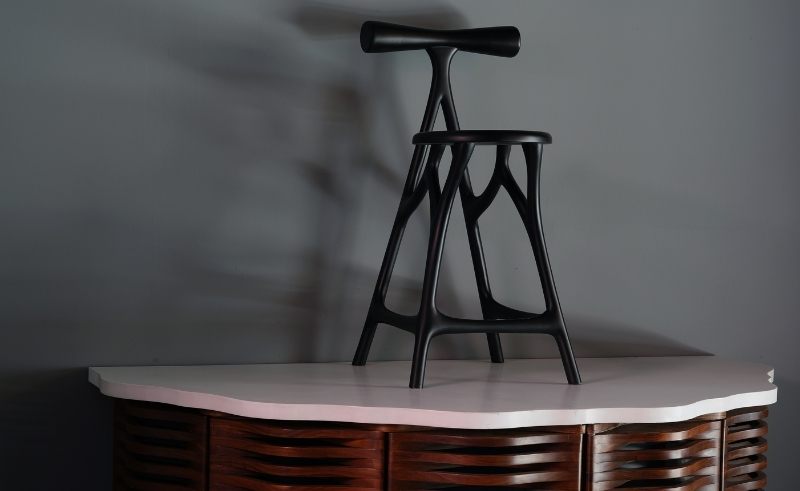
Amr Helmy — Amr Helmy Designs: The Kitchen
Helmy’s Gaudy Kitchen (yes, that’s how he spelled it) was an ode to Gaudí’s surrealism and Cairo’s craftsmanship. Wooden louvers curved like ribbons in motion, while whimsical chimneys — inspired by Gaudí’s Barcelona rooftops — were reimagined as polished silver legs that doubled as sculptural jewelry. The result was both functional and fantastical: a kitchen that performed like architecture and looked like art.
Crafted to perfection, Helmy’s space radiated warmth through Holzer wooden flooring that seamlessly extended into Shewekar’s living room, creating a literal flow between spaces. The transition between her burnt orange and his cool greys symbolised the project itself — distinct voices speaking one visual language.
-db30479f-255a-4dd4-9f46-b4c2f2e60deb.jpg)
Editor’s Note
I still don’t know how we did it.
Three sleepless days. A site that shouldn’t have been possible. A team that refused to quit. I remember standing in the Citadel at sunrise, covered in dust, hands shaking from caffeine and adrenaline, watching it all come together — walls being painted, furniture lifted, lighting tested, people moving like clockwork around something that shouldn’t exist but somehow did.
There were moments I genuinely thought I wouldn’t make it through those days, but I’ve never been prouder of anything in my life. We didn’t just build a house; we built a story — one that captured the spirit of Egypt’s design scene at its most raw, collaborative, and alive.
When the music started that night and the doors finally opened, I realised it wasn’t exhaustion I was feeling. It was disbelief. Gratitude. Awe.
That house was more than wood and paint — it was proof that passion, when shared, can move mountains… or at least build one inside the Cairo Citadel.
Trending This Week
-
Dec 23, 2025








